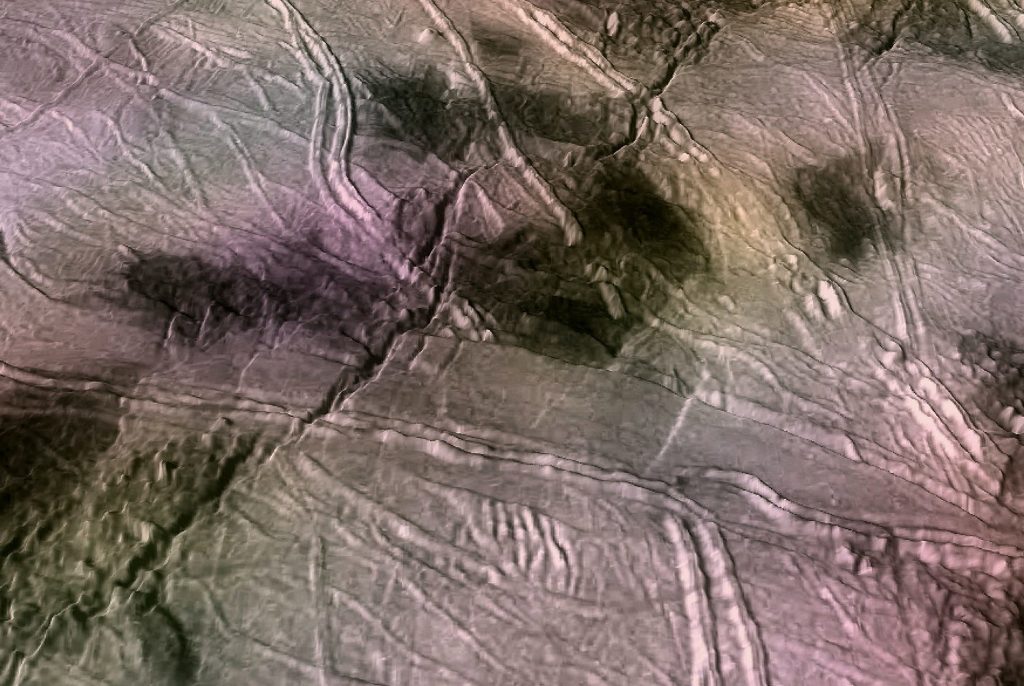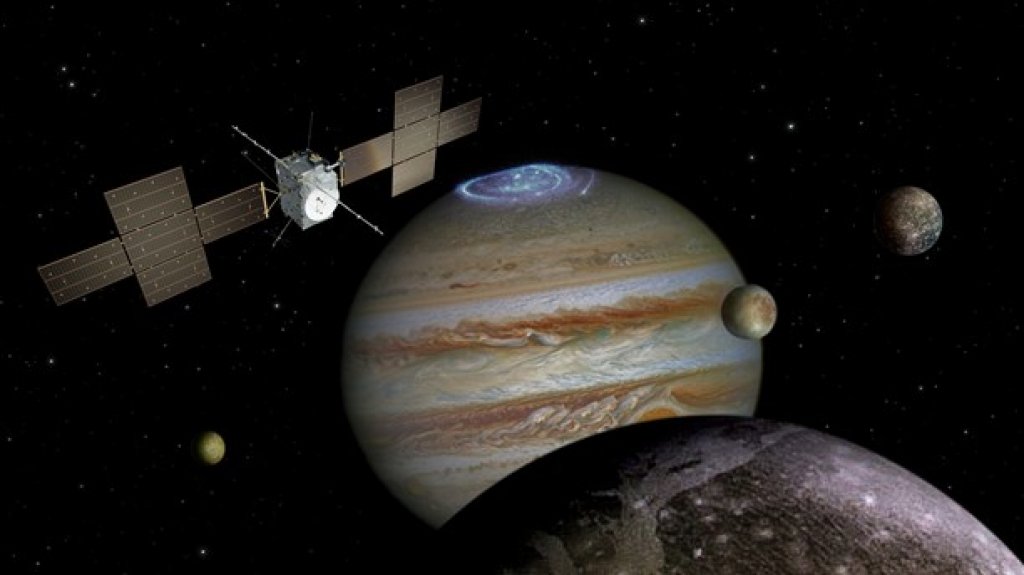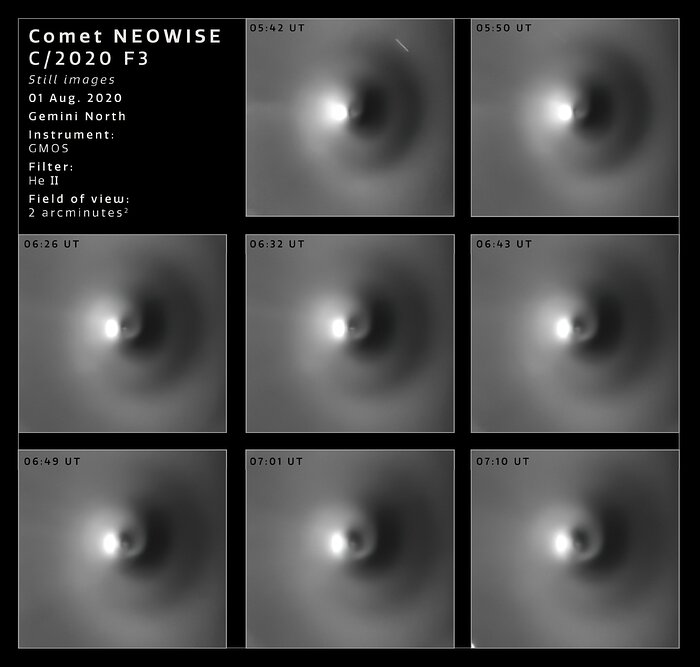Media
Transcript
Hi. It’s me again. You may be wondering why you are seeing me on a Tuesday and not a Thursday. Much of our team is swamped with setting up and managing the Planetary Science Institute’s retreat, which this year, of course, is virtual. And who better to help produce a virtual event than the group that brought you CosmoQuest-a-Con? So Pamela, Annie, and Ally are doing All The Things while I hold down the Daily Space fort this week. Whee!
The news was a bit scarce yesterday, with only one press release in my inbox. I’m pulling some from Friday as a result. Hey, space peeps. It’s a pandemic. Make with the press releases! People are stuck at home and need their science fix, and I have a news show to do.
Honestly, it’s amusing to me that I managed to find another set of planetary science stories to share today. I’m hoping we’ll have more for Thursday, or I’ll have to dig into that astrophysics background to explain stars and black holes. None of us want that.
So let’s get to it, shall we?
New research published in the Geophysical Research Letters has found that Europa’s poles have shifted, and the cracks show that the icy surface has reoriented by 70 degrees. This event occurred fairly recently in the last few million years.

This “true polar wander” can only happen if the icy shell is disconnected from the moon’s core and is free-floating on a subsurface ocean, which is a great confirmation of the composition of Europa.
Lead author Paul Schenk explains: Our key finding is that the fractures associated with true polar wander on Europa cross-cut all terrains. This means that the true polar wander event is very young and that the ice shell and all features formed on it have moved more than 70° of latitude from where they first formed. If true, then the entire recorded history of tectonics on Europa should be reevaluated.
The research was done using images from NASA’s Galileo spacecraft, and the results give us several questions that the upcoming Europa Clipper mission should be able to answer.
Speaking of upcoming missions, Europa Clipper isn’t the only mission we’re excited about. The European Space Agency is working on JUICE – the JUpiter ICy moons Explorer – which will gather data on Europa as well as Ganymede and Callisto.

Last week, the Swedish Institute of Space Physics (IRF) announced the completion of one of their instruments for JUICE, the Radio & Plasma Wave Investigation instrument. Per the press release: The instrument is designed to investigate, in particular, how Jupiter’s magnetosphere interacts with the atmospheres of the icy moons. We primarily hope to identify and map how Ganymede’s ocean flows under the ice sheet and what processes keep it going. With RPWI, we will not be able to detect any life in the oceans, but where there is liquid water, there are opportunities for life.
JUICE is currently expected to launch in 2022 from French Guiana on an Ariane 5 rocket, and we’ll cover the launch and all the science as it comes in, so please stay tuned.
Finally, we bring you new images of Comet NEOWISE, which continues to generate research and press releases.

First up, the Hubble Space Telescope caught this picture, which zeroes in on the coma, the outer layer of the comet that gets heated by the Sun and glows so pretty in everyone’s pictures. The new photo shows that the nucleus of NEOWISE survived its closest pass with the Sun, although Hubble cannot resolve the tiny nucleus. Instead, Hubble saw two jets on opposite sides of the body. These jets are a result of ice sublimating out from under the surface of the nucleus and being squeezed out as gas and dust.
The press release goes on to further explain: The Hubble photos may help reveal the color of the comet’s dust and how those colors change as the comet moves away from the Sun. This, in turn, may explain how solar heat affects the composition and structure of that dust in the comet’s coma. The ultimate goal here would be to learn the original properties of the dust to learn more about the conditions of the early solar system in which it formed.
Last but not least, Gemini Observatory put together a set of images into a brief timelapse of comet NEOWISE that displays a spiraling stream of molecular gas that reveals the rotation of the comet’s nucleus. The timelapse sequence, compressed to only a few seconds, represents about one-fifth of the approximately 7.5-hour rotation period of the comet.

Basically, those jets that Hubble captured are shown by Gemini to be “spiraling outward like water from a spinning garden hose.”
And once again, because it’s 2020, I’m going to touch on the potential for an asteroid to hit Earth right before the US Election Day. Numerous news outlets have exclaimed that we are going to get hit. That may be true. But asteroid 2018 VP1, which was discovered, as the name suggests, in 2018, is about the same size as the asteroid we talked about last week – an SUV. While it may pass very close to our planet at about 5,000 kilometers, it’s too small to do any serious damage.
Learn More
Large Shift on Europa Was Last Event to Fracture Its Surface
- Lunar and Planetary Institute press release
- “A Very Young Age for True Polar Wander on Europa from Related Fracturing,” P. Schenk, I. Matsuyama & F. Nimmo, 2020 July 29, Geophysical Research Letters
Technology Ready to Explore Subsurface Oceans on Ganymede
- Swedish Institute of Space Physics press release (scroll for English)
Comet NEOWISE — Surviving the Sun
A Dizzying Show by Comet NEOWISE
- NOIRLab press release
- “Rotation of Comet C/2020 F3 (NEOWISE),” Michal Drahus et al., 2020 Aug. 14, Astronomers Telegram
Credits
Written by Beth Johnson
Hosted by Beth Johnson
Audio and Video Editing by Ally Pelphrey
Content Editing by Beth Johnson
Executive Producer Pamela Gay
Intro and Outro music by Kevin MacLeod, https://incompetech.com/music/


 We record most shows live, on Twitch. Follow us today to get alerts when we go live.
We record most shows live, on Twitch. Follow us today to get alerts when we go live.